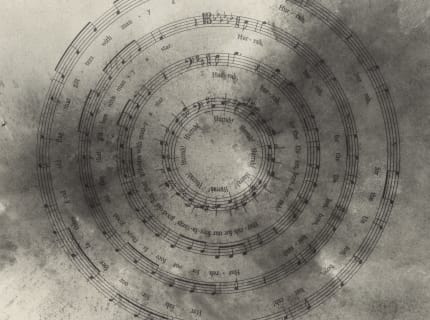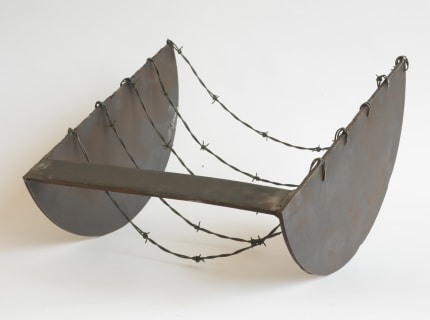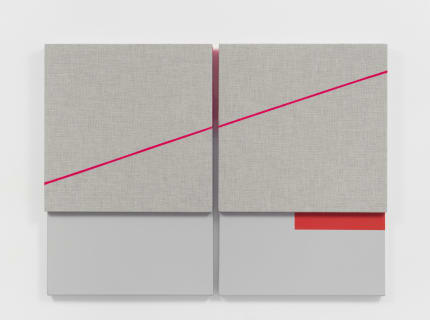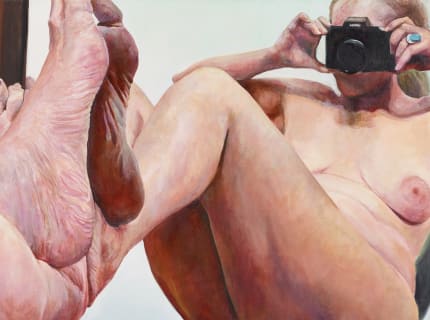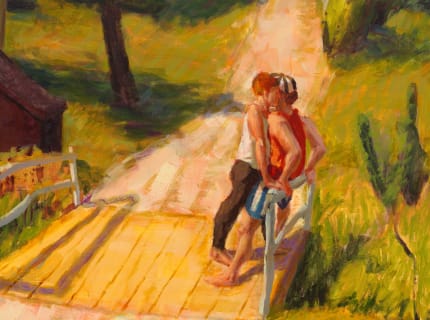Frieze Los Angeles 2024
Booth B5 | Santa Monica Airport, 3233 Donald Douglas Loop S, California
Preview (invitation-only): February 29–March 1, 2024
Public Days: March 2–3, 2024
Alexander Gray Associates presents new paintings and works on paper by Carrie Moyer, alongside works by Ricardo Brey, Bethany Collins, Melvin Edwards, Jennie C. Jones, Steve Locke, Joan Semmel, Hugh Steers, and Ronny Quevedo. The Gallery’s presentation highlights these nine artists’ innovative approaches to abstraction, representation, and materiality.
Foregrounding the presentation are Carrie Moyer’s vibrant compositions like The Good Ship and The Vapors (both 2023). Comprised of layered surfaces and fluid forms, these canvases freely oscillate between abstraction and representation. This playful seesawing—a simultaneous rejection and embrace of formalism—speaks not only to her commitment to feminist political theory, but also to her deep investment in art history. At the same time, it allows Moyer to elevate the visual, to revel in luminous expanses of acrylic, adorned shapes, and bold organic forms, while infusing these elements with content. As in her paintings, Moyer combines different techniques and media in works on paper like Configuration #17 and Configuration #18 (both 2023). She originally created these “configurations” as preparatory studies for her paintings; however, they soon became an independent body of work. As she explains, “There’s a kind of immediacy and moodiness,” which she attributes to her “… fondness for a comic, sci-fi sensibility turned metaphysical and atmospheric through the repeated process of staining, salting, and spraying the surface with inks and water.”
Meanwhile, Joan Semmel, Hugh Steers, and Steve Locke center their practices around personal explorations of portraiture. Taking her own body as subject, in paintings like Hide and Seek (2023) Semmel captures her nude figure in continual movement against a wall. This canvas and related works demonstrate her commitment to bodily autonomy, ultimately challenging the objectification and fetishization of the female nude and female sexuality. Steers, who was diagnosed with HIV in 1987, created allegorical paintings that at once suggest and resist explicit narratives. Often articulating the poignant emotional reality of living in a time when love and death were inextricably linked for gay men, his paintings like At the Mirror (1987) form a stark and haunting portrait of an AIDS-stricken New York. Whereas Locke’s ongoing series of cruisers paintings capture intimate moments between gay men, mapping the connection between identity, desire, and vulnerability. Saturated in unspoken tension, cruisers (check out) (2023) depicts an intensely intimate—and potentially dangerous—moment shared between anonymous men.
Eschewing figuration, Ricardo Brey, Ronny Quevedo, Bethany Collins, and Jennie C. Jones explore the complex intersections between the personal and the cultural, challenging and reconfiguring geographic and historical positions. Weeping Willow (2022), part of Brey’s recent series of lyrical works on paper, expands on his decades-long examination of the natural world. This and related compositions were created in part as a way of processing the immense horror he felt when he returned to his native Cuba after more than twenty years in exile to discover widespread deforestation. Alternatively, Quevedo employs his materials to pay homage to his personal history and cultural heritage. In South Bronx Weave (81 blocks of sun and moon) (2023), he fuses together sheets of dressmaker’s pattern paper—a tribute to his mother’s work as a professional seamstress—and adorns them with gold leaf to create an abstract grid motif that recalls the textile patterns of indigenous South American tribes. Also speaking to histories, Collins further expands on her investigations into the American South in song drawings like The Bonnie Blue Flag with Stripes and Stars (2023), which juxtaposes a Union rendition of a soldier’s Confederate song from the Civil War with loose charcoal illustrations of tear gas fired by police during the Black Lives Matter protests in 2020. With these works, Collins simultaneously bridges the haunting histories of the past with those of the present. Finally, in new Acoustic Paintings, Jones continues to explore the perception of sound within the visual arts by incorporating physical noise-absorbing materials. With these conceptual works that reflect on the legacy of modernism and minimalism, Jones encourages viewers to anticipate the presence of sound, stating that paintings like Fluid Red Tone with Sharps (2023) are always “active.”
Representing abstraction and figuration, the works in the Gallery’s presentation emerge as poignant symbols of personal and collective identities that speak to our past and present moment. Each painting and work on paper offers the artist’s individual perspective, recalling Moyer’s assertion, “What is political about my painting is its basis in my own experience.”


